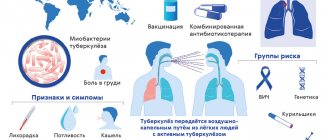Vaxigrip is an inactivated split vaccine for the prevention of influenza. STRAINS 2019/2020. Registration certificate: P NО1449З/01 Trade name: Vaxigrip Group name: vaccine for the prevention of influenza Dosage form: suspension for intramuscular and subcutaneous administration Country of origin: Sanofi Pasteur, France Preliminary examination: not required Cost of the vaccine: 1600 rubles (additional payment for examination before vaccination) Applicable: For adults and children from 6 months. Conditions for dispensing from pharmacies: Syringes - by prescription, Ampoules - For medical institutions Availability of vaccine: out of stock Analogues of this vaccine: Influvac vaccine (for adults and children from 6 months) Ultrix quadri vaccine ( Ultrix) (for adults 18+)
Leave a request for vaccination. Our manager will coordinate an appointment time convenient for you.
Sign up for vaccination
Sign up by phone
+7 (495) 788-000-2
COMPOUND
0.5 ml of suspension contains:
Active components:
Inactivated split influenza viruses cultured on chicken embryos, represented by strains equivalent to the following:
- A/Brisbane/02/2018, IVR-190 similar to A/Brisbane/02/2018(H1N1) pdm09- 15 μg GA;
- A/Kansas/14/2017 NYMC X-327, similar to A/Kansas/14/2017(H3N2) - 15 μg of GA;
- B/Maryland/15/2016 NYMC BX-69A, similar to B/Colorado/06/2017 - 15 mcg GA.
Auxiliary components:
- buffer solution (sodium chloride, potassium chloride, sodium hydrogen phosphate dihydrate, potassium dihydrogen phosphate, water for injection) - up to 0.5 ml;
- The strain composition of the vaccine complies with WHO recommendations for the Northern Hemisphere and the EU decision on the composition of influenza vaccines for the 2019/2020 season. Vaxigrip may contain no more than 0.05 mcg of ovalbumin per dose.
USE DURING PREGNANCY AND LACTATION
The available data on the use of the vaccine in pregnant women do not indicate the possibility of negative effects of vaccination on the fetus and the woman's body .
Vaccination can be carried out starting from the second trimester of pregnancy . For medical reasons, if there is an increased risk of developing post-influenza complications, the use of this vaccine is recommended regardless of the stage of pregnancy.
The vaccine can be used during breastfeeding.
Indications for Vaxigrip vaccination
Vaxigrip vaccination is indicated for a wide range of people:
- children older than 6 months during the period of rising incidence;
- patients with chronic diseases of the heart and blood vessels, kidneys, and respiratory organs;
- pregnant and lactating women;
- persons over 60 years of age;
- cancer patients receiving cytostatics, other chemotherapeutic drugs and/or radiation therapy;
- persons with immunodeficiency conditions who are being treated with hormonal drugs and immunosuppressants.
It is recommended for people with an increased risk of post-influenza complications to get the Vaxigrip flu vaccine.
METHOD OF APPLICATION AND DOSAGE
The vaccine is administered intramuscularly or deep subcutaneously . Do not administer intravenously! The vaccine should be kept at room temperature and shaken before use.
- For children over 36 months and adults - 0.5 ml once;
- For children aged 6 months to 35 months inclusive - 0.25 ml once;
- For children under 9 years of age who are being vaccinated against influenza for the first time, two doses of Vaxigrip are indicated with an interval of 4 weeks.
When using a syringe containing 0.5 ml of vaccine to immunize children for whom a dose of 0.25 ml is indicated, it is necessary to remove half of the contents by pressing the plunger to a special mark. Inject the remaining amount of vaccine into the patient.
When using an ampoule containing 0.5 ml of vaccine to immunize children for whom a dose of 0.25 ml is indicated, it must be withdrawn using an appropriately graduated syringe. The remainder of the vaccine in the ampoule must be destroyed immediately.
Flu
Flu
- an acute respiratory viral infection caused by viruses of groups A, B or C, occurring with severe toxicosis, fever, damage to the upper and lower respiratory tract.
Flu
often causes complications, including death, and causes epidemics.
Characteristics of influenza:
- the most dangerous infection from the ARVI family
- highly infectious
- rapid spread
- sudden onset of first symptoms
- high risk of complications
- duration of threat from November to March
There are three groups of the virus:
- group A
- with numerous strains. It has a severe course, a high percentage of complications, and is highly mutated - group B
– is relatively mild, rarely causes complications, mutates strongly - group C
– proceeds relatively easily, practically does not mutate, occurs mainly in children
The influenza virus belongs to the group of acute respiratory viral infections, has a distribution, seasonality and course similar to them, but has more pronounced clinical manifestations, course and outcomes.
Influenza is prone to epidemic spread. The source of infection is sick people during the incubation and peak periods. Infection occurs by airborne droplets, from the moment of infection to clinical manifestations it takes from 6 hours to 2 days. The virus penetrates through the mucous membranes of the eyes and respiratory tract. Less commonly, infection occurs through shared hygiene items and utensils.
Flu symptoms:
- heat;
- headache;
- pain in muscles and joints (aches);
- runny nose;
- cough;
- a sore throat.
Each of us and our loved ones may be targeted, but we are especially vulnerable:
- babies, especially premature babies
- pregnant women
- often sick
- elderly
- patients with chronic diseases (lungs, heart, immune system), with diabetes;
- overweight people.
How to diagnose influenza?
The basis for diagnosing influenza is typical clinical signs with severe intoxication and an indication of epidemic data. Confirms the diagnosis of influenza by isolating a strain of the virus from the mucous membrane of the throat and nose. During an influenza epidemic, the diagnosis is made based on clinical data.
Complications of influenza:
- sinusitis (inflammation of the sinuses)
- otitis (ear inflammation)
- bronchitis (inflammation of the bronchi)
- pneumonia (pneumonia)
- meningitis (inflammation of the lining of the brain)
- myocarditis (inflammation of the heart muscle)
- exacerbation of chronic diseases
- decreased immunity and frequent morbidity after
- risk of miscarriage
Flu prevention:
- difficulties in compliance and insufficient effectiveness of usual preventive measures (frequent hand washing, rinsing the nose with saline solutions, limiting visits to crowded places and contact with coughing people, wearing a mask during the epidemic season)
- vaccination
is the most effective and internationally proven method of protection - It is better to get vaccinated in advance, given that it will take an average of 2 weeks to develop immunity
There are few contraindications to vaccination:
- acute febrile condition
- exacerbation of a chronic disease
- anaphylactic (extremely severe allergic) reaction to egg white or neomycin
SIDE EFFECTS
General reactions
- Increased body temperature;
- Malaise;
- Chills;
- Feeling tired;
- Headache;
- Sweating;
- Muscle pain (myalgia);
- Joint pain (arthralgia).
Local reactions
- Redness;
- Swelling;
- Soreness;
- Bruising (ecchymosis);
- Lump at the injection site.
These reactions usually resolve within 1-2 days and do not require special treatment.
With the mass use of Vaxigrip, in very rare cases the following adverse reactions occurred:
- Transient thrombocytopenia;
- Lymphadenopathy;
- Vasculitis with possible short-term involvement of the kidneys (in isolated cases);
- Paresthesia;
- Guillain-Barre syndrome;
- Neuritis;
- Neuralgia;
- Convulsions;
- Encephalomyelitis;
- Hives;
- Itching;
- Skin rashes;
- Dyspnea;
- Angioedema;
- Shock.
Flu vaccination (Vaxigrip, once)
Vaxigrip is an inactivated split vaccine for the prevention of influenza. Immunobiological
Vaxigrip forms the development of specific immunity to epidemically relevant strains of influenza virus types A and B contained in this vaccine. Immunity is developed between the 2nd and 3rd weeks after vaccination and lasts from 6 to 12 months.
Use during pregnancy and lactation
The available data on the use of the vaccine in pregnant women do not indicate the possibility of negative effects of vaccination on the fetus and the woman’s body. Vaccination can be carried out starting from the second trimester of pregnancy. For medical reasons, if there is an increased risk of developing post-influenza complications, the use of this vaccine is recommended regardless of the stage of pregnancy.
The vaccine can be used during breastfeeding
Side effects
General reactions
- Increased body temperature;
- Malaise;
- Chills;
- Feeling tired;
- Headache;
- Sweating;
- Muscle pain (myalgia);
- Joint pain (arthralgia).
Local reactions
- Redness;
- Swelling;
- Soreness;
- Bruising (ecchymosis);
- Lump at the injection site.
These reactions usually resolve within 1-2 days and do not require special treatment. With the mass use of Vaxigrip, in very rare cases the following adverse reactions occurred:
- Transient thrombocytopenia;
- Lymphadenopathy;
- Vasculitis with possible short-term involvement of the kidneys (in isolated cases);
- Paresthesia;
- Guillain-Barre syndrome;
- Neuritis;
- Neuralgia;
- Convulsions;
- Encephalomyelitis;
- Hives;
- Itching;
- Skin rashes;
- Dyspnea;
- Angioedema; Shock.
special instructions
Due to the fact that the incidence of influenza is seasonal, it is recommended to vaccinate annually in the autumn-winter period, when the risk of influenza is greatest;
The vaccine leads to the development of immunity only against 3 strains of the influenza virus contained in the drug or against strains similar to those indicated. Vaxigrip does not provide immunity against influenza when vaccinated during the incubation period of the disease, as well as against influenza caused by other strains of the virus. Vaxigrip does not form the development of immunity against diseases similar in symptoms to the flu, but caused by other pathogens.
Vaccination against influenza, carried out during the previous epidemic season, cannot provide reliable protection for the next season, because Each epidemic season has its own most common strains of the influenza virus;
The physician should be informed if the patient has an immunodeficiency, allergy, or unusual reaction to a previous vaccination, as well as of any treatment that coincided with or preceded the vaccination.
The vaccine should not be used if the suspension is uncharacteristically colored or if there are foreign particles in it; The use of this vaccine does not affect the ability to drive a car or use other equipment;
Within a few days after vaccination, cases of false-positive results may occur when determining antibodies to HIV-1, hepatitis C virus and, especially, human T-lymphotropic virus type 1 by enzyme-linked immunosorbent assay (ELISA). In these cases, the result obtained by ELISA is assessed using Western blotting;
Interaction with other drugs
Vaxigrip can be used simultaneously (on the same day) with other vaccines. In this case, the drugs must be injected into different parts of the body using different syringes. The vaccine cannot be mixed with any other medicine in the same syringe.
In patients undergoing immunosuppressive therapy (corticosteroids, cytotoxic or radioactive drugs), the immune response after vaccination may be insufficient.
Indications for examination
Prevention of influenza in adults and children from 6 months of age . Vaccination is especially indicated for individuals at increased risk of developing post-influenza complications.
Preparing for the examination
No special preparation is required.
Before vaccination in children it is not recommended:
- Introduce new complementary foods to your child
- Combine vaccination with massage or physiotherapeutic treatment
- Change the climate dramatically (travel, travel, etc.).
SPECIAL INSTRUCTIONS
- Due to the fact that the incidence of influenza is seasonal, it is recommended to vaccinate annually in the autumn-winter period, when the risk of influenza is greatest ;
- The vaccine leads to the development of immunity only against 3 strains of the influenza virus contained in the drug or against strains similar to those indicated. Vaxigrip does not provide immunity against influenza when vaccinated during the incubation period of the disease, as well as against influenza caused by other strains of the virus. Vaxigrip does not form the development of immunity against diseases similar in symptoms to the flu, but caused by other pathogens. Vaccination against influenza, carried out during the previous epidemic season, cannot provide reliable protection for the next season, because Each epidemic season has its own most common strains of the influenza virus;
- The physician should be informed if the patient has an immunodeficiency, allergy, or unusual reaction to a previous vaccination, as well as of any treatment that coincided with or preceded the vaccination. The vaccine should not be used if the suspension is uncharacteristically colored or if there are foreign particles in it;
- The use of this vaccine does not affect the ability to drive a car or use other equipment;
- The doctor should be informed of all cases of adverse reactions, not limited to those listed in this instruction;
- Within a few days after vaccination, cases of false-positive results may occur when determining antibodies to HIV-1, hepatitis C virus and, especially, human T-lymphotropic virus type 1 by enzyme-linked immunosorbent assay (ELISA). In these cases, the result obtained by ELISA is assessed using Western blotting;
- When carrying out vaccination, it is necessary to have available the medications necessary to provide emergency assistance in case of an anaphylactic reaction;
When should I get the Vaskigrip vaccine?
The timing of vaccination is determined by the rate of formation of immunity and its duration. Immunity after vaccination with Vaxigrip is formed between 2 and 3 weeks after vaccination. The duration of immunity is 6-12 months.
Based on this, the most suitable time for vaccination is the autumn-winter period, from October to March. The vaccination is carried out once intramuscularly or subcutaneously into the shoulder muscle. Children vaccinated for the first time are given a second vaccination after 28 days intramuscularly in the thigh. It is important that Vaxigrip vaccination for children does not violate the vaccination schedule; it is compatible with all other vaccinations except BCG.







